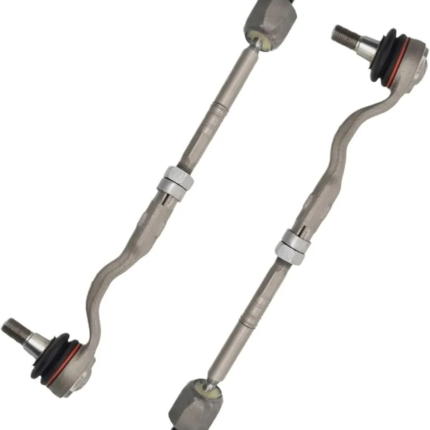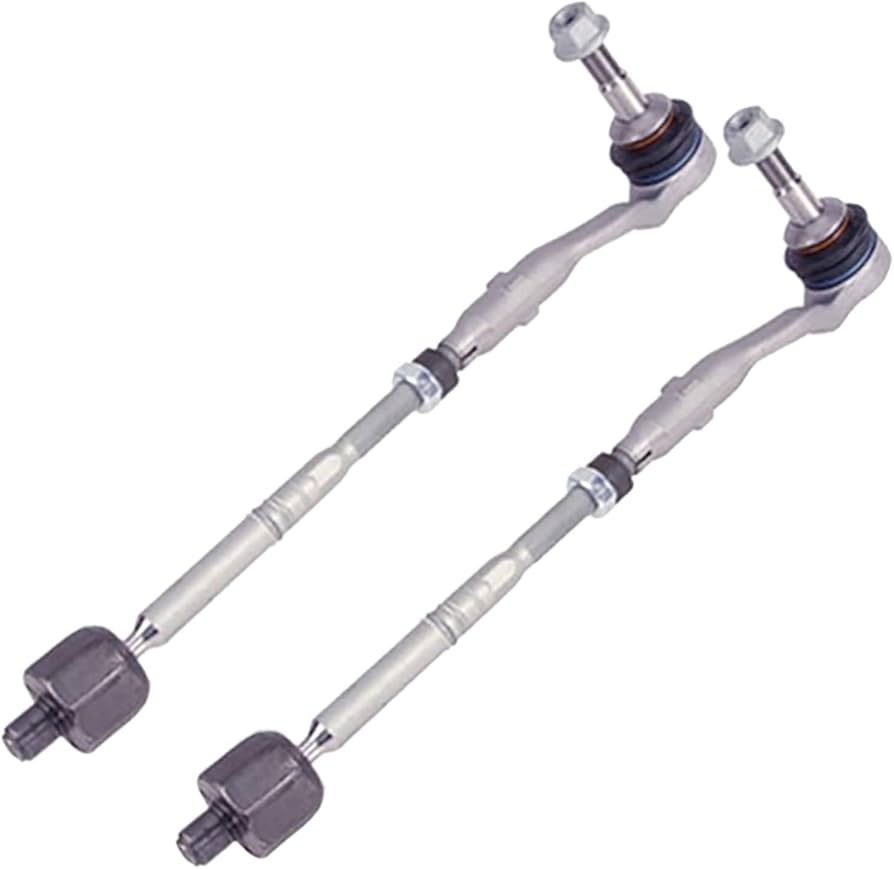-13%
Get BMW F13 640i xDrive N55 3.0L Tie Rod Assembly LH 32106784716 in Kenya
The tie rod assembly is an integral component of a vehicle’s steering system, responsible for transmitting steering input from the steering rack to the wheels. Specifically, the Left-Hand (LH) tie rod assembly plays a vital role in ensuring proper alignment, smooth handling, and precise control while driving. This detailed guide explores the functions, components, benefits, common issues, and maintenance of the Tie Rod Assembly LH.
What Is a Tie Rod Assembly?
A tie rod assembly is a mechanical linkage in the steering system that connects the steering rack or steering gearbox to the steering knuckle on the wheel. It plays a crucial role in transferring motion and force to steer the wheels as the driver turns the steering wheel.
The assembly is typically divided into two parts:
- Inner Tie Rod: Attached to the steering rack or gearbox.
- Outer Tie Rod: Connected to the inner tie rod and the steering knuckle.
The Left-Hand (LH) tie rod assembly refers specifically to the assembly on the driver’s side (in left-hand-drive vehicles) or the passenger side (in right-hand-drive vehicles).
Components of the Tie Rod Assembly LH
A tie rod assembly comprises several components that work in unison:
- Inner Tie Rod:
- The part connected to the steering rack or gearbox. It transmits the steering input to the outer tie rod.
- Outer Tie Rod:
- The component linked to the steering knuckle. It facilitates precise wheel movement in response to steering input.
- Ball Joint:
- Located at the end of the outer tie rod, it allows for smooth rotation and pivoting of the wheel during steering and suspension movement.
- Tie Rod End Boots:
- Rubber boots that protect the ball joints from dirt, debris, and moisture, ensuring durability and smooth operation.
- Adjusting Sleeve (Optional):
- Found in some designs, it connects the inner and outer tie rods and allows for wheel alignment adjustments.
How the Tie Rod Assembly LH Works
- Steering Input:
- When the driver turns the steering wheel, the movement is transmitted through the steering column to the steering rack or gearbox.
- Force Transmission:
- The inner tie rod moves in response to the steering rack’s motion, pushing or pulling the outer tie rod.
- Wheel Alignment and Steering:
- The outer tie rod, connected to the steering knuckle, rotates the wheel in the desired direction.
- Suspension Interaction:
- The ball joint at the outer tie rod end allows for the up-and-down movement of the suspension while maintaining a secure connection with the steering knuckle.
Functions of the Tie Rod Assembly LH
- Steering Control:
- Ensures precise transmission of steering inputs to the wheels, allowing the driver to control the vehicle effectively.
- Alignment Maintenance:
- Keeps the wheels properly aligned to prevent uneven tire wear and maintain stability during driving.
- Suspension Interaction:
- Works in harmony with the suspension system to absorb road shocks and ensure a smooth ride.
- Safety Enhancement:
- Provides reliable control over the vehicle’s direction, contributing to overall road safety.
Signs of a Faulty Tie Rod Assembly LH
Over time, wear and tear can cause the tie rod assembly to degrade. Common signs of a failing LH tie rod assembly include:
- Steering Problems:
- Difficulty turning the steering wheel or experiencing a loose or “wandering” steering feel.
- Uneven Tire Wear:
- A misaligned tie rod can cause uneven or excessive wear on the tires.
- Clunking Noises:
- A damaged ball joint or loose tie rod can produce clunking or knocking sounds, especially when turning.
- Vehicle Pulling to One Side:
- A worn tie rod assembly can cause the vehicle to veer to the left or right while driving.
- Vibration in the Steering Wheel:
- A loose or damaged tie rod can cause vibrations, particularly at higher speeds.
- Alignment Issues:
- A failing tie rod assembly can lead to difficulty maintaining proper wheel alignment.
Causes of Tie Rod Assembly Damage
- Wear and Tear:
- Over time, the ball joints and other components may wear out due to constant use.
- Road Conditions:
- Driving on rough or uneven roads, potholes, or over curbs can strain and damage the tie rod assembly.
- Corrosion:
- Exposure to moisture and road salt can lead to rust, weakening the tie rod components.
- Improper Maintenance:
- Neglecting regular inspections or failing to address minor issues can lead to significant damage.
- Accidents or Impacts:
- Collisions or hard impacts can bend or break the tie rod assembly.
Maintenance and Care Tips
- Regular Inspections:
- Check the tie rod assembly during routine maintenance to identify signs of wear or damage.
- Keep Ball Joints Lubricated:
- Ensure the ball joints are properly greased to reduce friction and wear.
- Protect the Tie Rod End Boots:
- Inspect the rubber boots for cracks or tears and replace them if necessary to prevent dirt and moisture intrusion.
- Alignment Checks:
- Have the wheel alignment checked regularly, especially after replacing the tie rod assembly or suspension components.
- Replace Worn Components Promptly:
- Address any signs of wear or damage immediately to avoid further issues or safety risks.
Replacement of the Tie Rod Assembly LH
Replacing the tie rod assembly requires precision and should ideally be performed by a professional mechanic. The process involves:
- Safety Precautions:
- Ensure the vehicle is parked on a flat surface and the wheels are secured.
- Removing the Old Assembly:
- The tie rod assembly is detached from the steering rack and steering knuckle. The ball joint is separated using a specialized tool.
- Installing the New Assembly:
- The new tie rod assembly is installed, and components are securely tightened to the manufacturer’s specifications.
- Wheel Alignment:
- A thorough alignment is performed to ensure proper steering and tire wear.
Benefits of a Properly Functioning Tie Rod Assembly LH
- Improved Steering Response:
- Provides precise and predictable control over the vehicle’s direction.
- Enhanced Safety:
- Ensures stable and reliable handling, reducing the risk of accidents.
- Extended Tire Life:
- Maintains proper alignment, preventing uneven tire wear.
- Smoother Ride:
- Works seamlessly with the suspension to absorb shocks and deliver a comfortable driving experience.
- Reduced Maintenance Costs:
- Prevents additional wear on related components, saving money on repairs in the long run.
Applications of the Tie Rod Assembly LH
The tie rod assembly is used in all modern vehicles, including:
- Passenger cars.
- SUVs.
- Trucks.
- Commercial vehicles.
- Off-road vehicles.
Conclusion
The Tie Rod Assembly LH is a crucial part of the steering system, directly impacting vehicle handling, alignment, and safety. By understanding its components, functions, and maintenance requirements, drivers and mechanics can ensure optimal performance and longevity. Regular inspections, timely replacements, and proper care are key to keeping this essential component in peak condition, contributing to a safer and more enjoyable driving experience.
Follow us on Facebook for more parts.




Reviews
Clear filtersThere are no reviews yet.